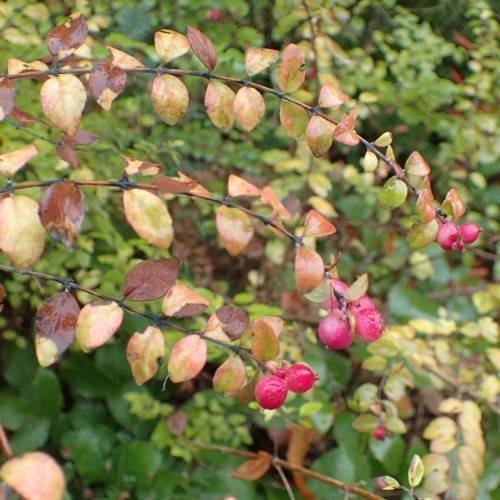
snowberry
Symphoricarpos chenaultii
Cycle:
Perennial
Watering:
Average
Hardiness Zone:
4 - 7
Flowers:
Flowers
Sun:
Full sun,part shade
Fruits:
Fruits Ready In Fall
Edible:
Yes
Leaf:
Yes
Growth Rate:
Low
Maintenance:
Low
Care Level:
Medium
watering
Snowberry plants should be watered deeply, but infrequently. During the spring and summer months, when active growth is occurring, provide water to the plant when the soil is dry about an inch below the surface, which is typically around once per week. During the fall and winter, water as needed but make sure that the soil is not too wet. This can usually be done once every two to three weeks. Pay attention to the weather, however, and give extra water when there has been prolonged dry or hot weather.
sunlight
Snowberry (Symphoricarpos chenaultii) should be grown in a spot that gets full sun to partial shade with approximately 4 to 6 hours of direct sunlight per day. It is tolerant of a wide range of light levels. However, too much sun can cause sun scald which will damage its leaves and fruits. Snowberry also needs well-drained soil and appreciates light, infrequent watering during extended dry periods.
pruning
Snowberry should be pruned in late winter, when it is dormant. This will help promote strong and healthy growth during the following growing season. Pruning during this time period helps keep the plant in control and encourages vigorous growth. Pruning should be done moderately, removing up to one third of the oldest stems at a time. Make sure that some stems at least a couple of years old remain as new stems can lack vigor and produce little in the way of fruit.
